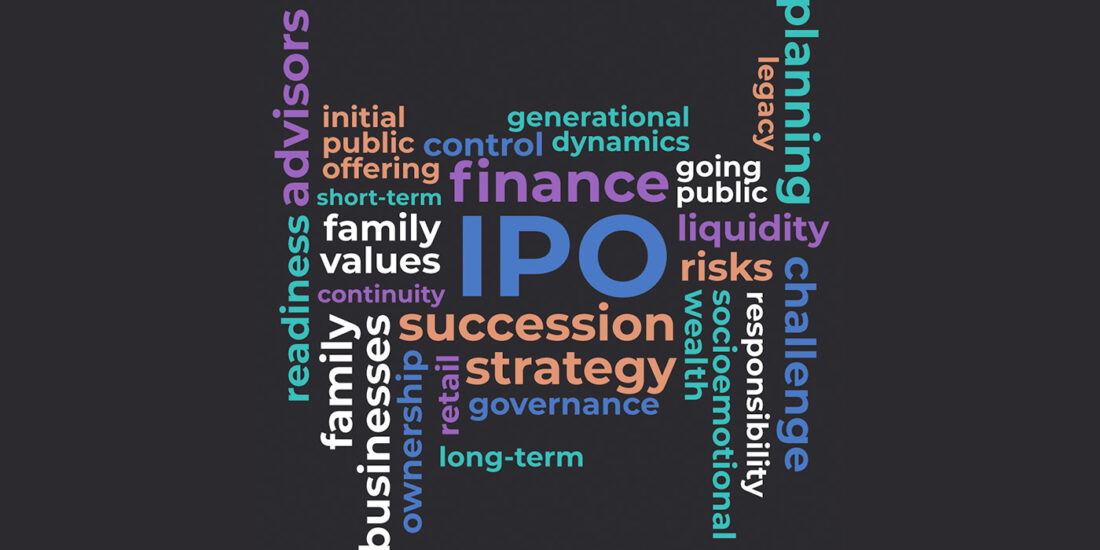Explaining Family Company Success and Survival
Families in business usually have a deep desire to see the family company prosper and survive into the next generation and to keep the family successful, united, and supportive of the family company. These are often “stretch” goals because not many family companies survive for generations, and because families seldom maintain unity, financial success, and supportiveness. Long-term family company success and survival are for the few who do a number of things right and benefit from the coincidence of particular environmental conditions, usually along with some luck.
Companies in general have short lives. In the U.S. 50% of all companies started today will be dead within five years, 25% will last a decade, and only 16% will survive a generation. Family-owned companies have been observed to live twice as long as non-family companies but still, not that long.
Size doesn’t protect a business much from a short life. A comparison of Forbes’ original (1917) and 1987 lists of the 100 largest American companies showed that only 18 of the original companies remained on the list after 70 years. Sixty-one of the original companies ceased to exist altogether. Another 21 had sunk far down in relative value and dropped off the list. Since 1987, seven of the surviving 18 companies have either been acquired or gone bankrupt. Only one company — GE — was still in existence in 2012 with above market returns. In other words, in a 95-year period, 99 of the largest 100 companies in the U.S. went out of business or fell by the wayside.
There is also evidence that company life spans are shrinking over time. A top 500 American company founded in the 1950s would have lived 53 years. One founded in 1970 lived, on average, only 32 years. In 2010, a top 500 American company was expected to live only 17 years.
The death of most companies is largely driven by the rapid change, contraction, or disappearance of their industries. Broader economic and social disruptions also account for a portion of business failure. The remainder of business failure has to do with how the company responds to the changes happening around it. Together with Tom Steiner, managing partner at Baldwin Bell Green, I am studying how family companies are faring in the current business environment—one of massive disruptive technological and global economic change—to understand how their distinctive characteristics and behaviors affect their chances for survival.
Assessing a family and its company’s chances of survival—the focus of much of my academic work—isn’t a simple matter. After all, these are complex systems operating in complex economic and social environments. Fortunately, however, general explanations of family company success and survival can be reduced to several factors.
In order to survive, all biological and social systems must attain adequate levels of growth and unity and adapt to environmental opportunities and threats. Social systems (businesses, other organizations, even nations) need enough trust, pride, talent, and money (financial resources) to fuel their growth and unity and to adapt to opportunities and threats. A family company must grow and stay united enough to capture resources, take advantage of opportunities in its markets, and protect itself from threats in the industry and the economy. The owning family (and particularly the key owners) must stay united enough and grow the family’s talents and resources so it can adequately control and contribute to its company, take advantage of opportunities, and protect the family and the company from a variety of threats.
Much can get in the way of doing these things well, but we observe that three factors profoundly impact how a family and its business work toward long-term success and survival: the industry life cycle stage, the family’s life cycle stage, and the business leader’s own life cycle stage.
Industry Life Cycle
Industries pass through distinctive periods or stages of start-up, growth, maturity, and decline, although different industries move through these stages at different speeds. A company must match its resources, talents, and management methods to its industry stage. This is generally difficult to do; more so if the company is wed to its traditional ways of doing business; and even more so if the pace of industry change is rapid. Today, many industries are being disrupted and threatened by technological changes occurring at an accelerating pace. As a result, many industry life cycles are becoming dramatically shorter or even collapsing. To survive in these conditions, a family company must be clear about its aspirations, resources, and talents and migrate away from business activities that have less potential for growth to business activities that have more.
Conceptualizing a family company as a portfolio of business activities and not becoming too attached to any one business facilitates such movement. So does having adequate company and family assets, a strong family commitment to value creation, and being able to make timely changes to the family business. These latter ingredients are characteristics of a family’s stage in its own life cycle.
Family Life Cycle
Families also have life cycles and pass through stages with distinctive characteristics. Families start at the creation stage, usually recognized as the generation when the founder starts the family business. The family ideally moves from the creation stage to a regeneration stage, where the family renews its drive to create long term value and wealth and to maintain family unity around its core activities. Alternatively, the family becomes complacent and then usually drifts into a decline stage, where family industry dissipates, family unity dissolves, and family assets disappear. The movement from one stage to another is the product of forces on the family and the family’s choices.
Families in the creation or regeneration stages have the greatest chance of adapting their companies to industry challenges. This is largely because they have a realistic view of their competitive environments and are committed to value creation, not the protection any one line of business activity. These characteristics make the family and business more capable of timely, adaptive change. People, families, and companies tend not to change until they are inescapably confronted with factors that threaten their survival. By then, it is usually too late to adapt fully to threats and survive.
The Leader’s Life Cycle
Leaders of family companies usually strongly influence the ability of a family and its company to adapt to industry changes, look for new opportunities, grow the family company, make bets on the future, and migrate into new business activities. Leaders have identifiable periods of energy, growth orientation, and risk taking, and clear periods of risk aversion when protecting family company assets and their own position of power in the system become high priorities. The success and survivability of a family company depends on the congruence of the leader’s life cycle with the challenges facing the company and the stage of the family itself.
Difficult, Not Impossible
Achieving congruence among these factors is challenging but doable. An excellent example of aligning lifecycles for regeneration is Kikkoman, founded in 1630 and owned by Mogi family members for 16 generations. Soy sauce has been around for centuries and has a long life cycle, but the family has stewarded the company through wars, natural disasters, and global economic changes. In 1973, Kikkoman was the first Japanese food company to open a factory in the U.S. and now people use soy sauces globally. With 79 year-old chairman and CEO Yuzaburo Mogi still at the helm, international sales have grown 10% for 25 years, according to The Economist.[1] But the growth engine of industry leader Kikkoman is not even in sauces. It’s in pharmaceuticals.
Kikkoman subsidiary Biochemifa has been researching yeast and other compounds for more than 100 years. Today it develops systems that monitor food safety and environmental hygiene and produces raw materials for clinical chemistry research and diagnostics, health food ingredients, and chemical products. None of these industries is in decline. Yuzaburo Mogi’s leadership has been key to the company’s growth. He has steadfastly energized the family company and led its expansion while promoting family unity. The Mogi family, still in the regeneration stage, has given the leader strong encouragement to expand and regenerate the company.
The lesson for practitioners in the family business field is to recognize the importance of these factors—industry and company stage, family stage and leader stage—in understanding the capability of the family business system to survive and be successful.
About the contributor:
 John Davis is an FFI Fellow and a senior lecturer of business administration at Harvard Business School. An HBS faculty member since 1996, he teaches and researches in the family business, family wealth, and life planning fields. John can be reached at jdavis@hbs.edu.
John Davis is an FFI Fellow and a senior lecturer of business administration at Harvard Business School. An HBS faculty member since 1996, he teaches and researches in the family business, family wealth, and life planning fields. John can be reached at jdavis@hbs.edu.
[1] “Sauce of Success: How Yuzaburo Mogi of Kikkoman helped turn soy sauce into a global product,” The Economist, April 9, 2009. https://www.economist.com/node/13443693 retrieved February 18, 2014.




